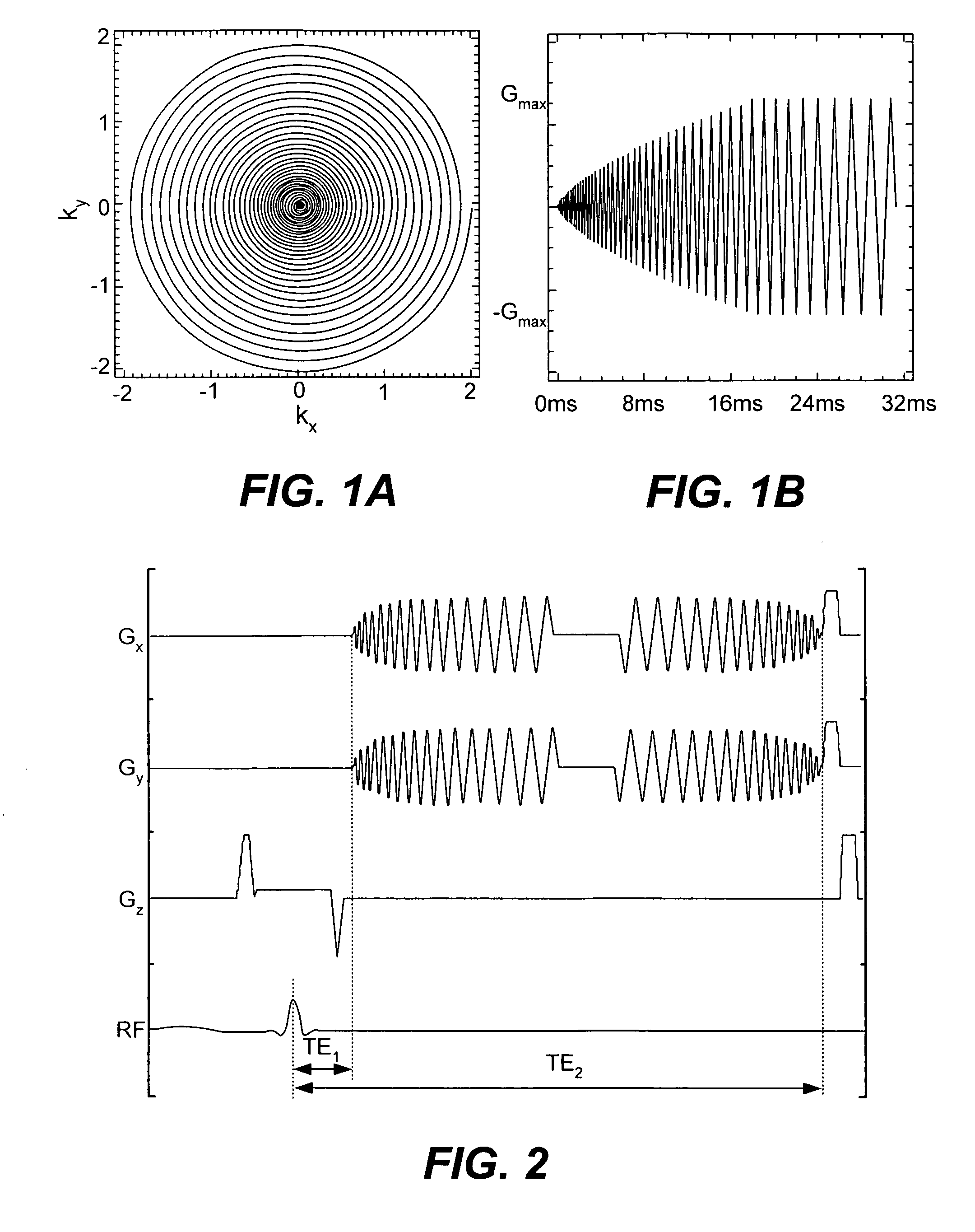Dual gradient echo pulse sequence using interleaved spiral-out spiral-in k-space trajectories
a pulse sequence and spiral-out spiral technology, applied in the field of magnetic resonance imaging (mri), can solve the problems of inability to accurately determine, poor resolution, and limitations of dsc-pwi, and achieve the effect of avoiding saturation effects and more sensitivity to contrast agents
- Summary
- Abstract
- Description
- Claims
- Application Information
AI Technical Summary
Benefits of technology
Problems solved by technology
Method used
Image
Examples
Embodiment Construction
[0015] The invention will be described for an embodiment employing dynamic susceptibility contrast (DSC) based perfusion weighted imaging (PWI) of hemodynamic parameters, such as blood flow. More particularly, a dual gradient echo in accordance with the invention permits measurement of arterial input function (AIF) as well as image by employing sensitivity encoding (SENSE) signal acquisition.
[0016] Spiral imaging more efficiently uses gradient hardware compared to other fast imaging techniques and has the inherent advantage of gradient moment nulling. To increase spatial resolution and to reduce the influences from T2* decay, interleaved spiral trajectories that traverse quickly k-space are of great advantage. Since for each interleaf the k-space trajectory in spiral imaging is designed to start from the k-space origin, spiral imaging also provides inherent self-navigation capabilities. Spiral imaging also uses the available gradient power very effectively by distributing the load ...
PUM
 Login to View More
Login to View More Abstract
Description
Claims
Application Information
 Login to View More
Login to View More - R&D
- Intellectual Property
- Life Sciences
- Materials
- Tech Scout
- Unparalleled Data Quality
- Higher Quality Content
- 60% Fewer Hallucinations
Browse by: Latest US Patents, China's latest patents, Technical Efficacy Thesaurus, Application Domain, Technology Topic, Popular Technical Reports.
© 2025 PatSnap. All rights reserved.Legal|Privacy policy|Modern Slavery Act Transparency Statement|Sitemap|About US| Contact US: help@patsnap.com


